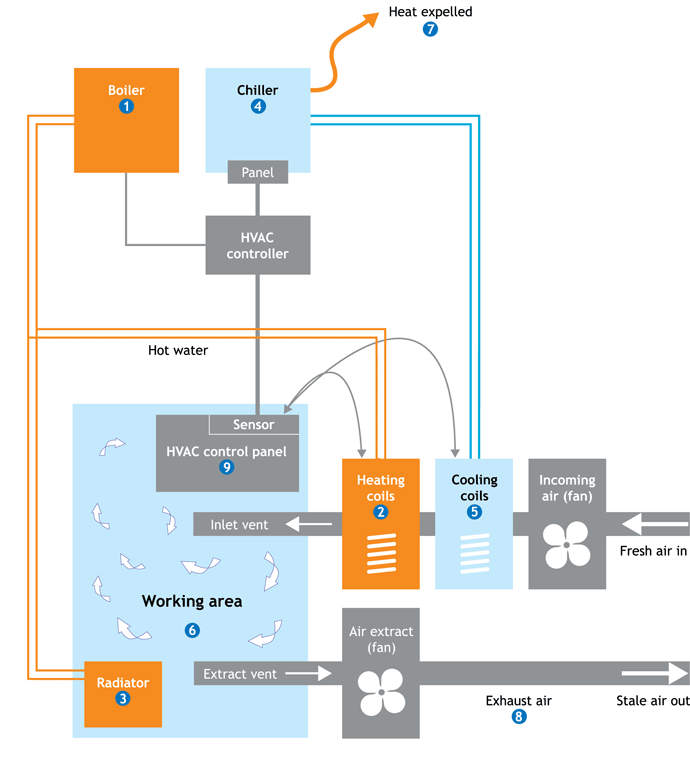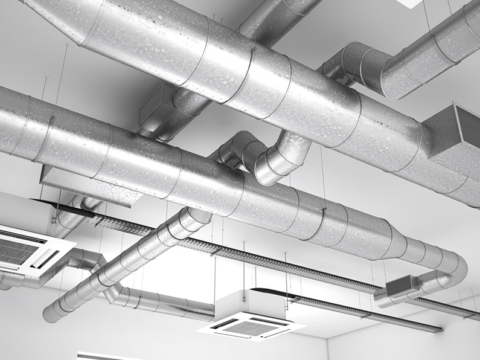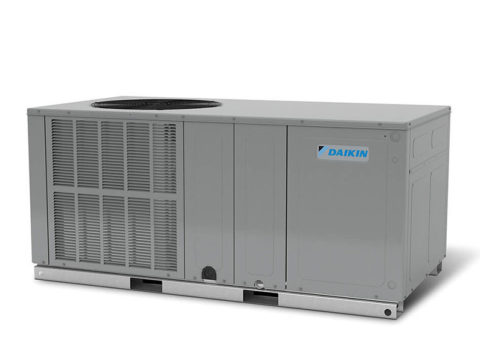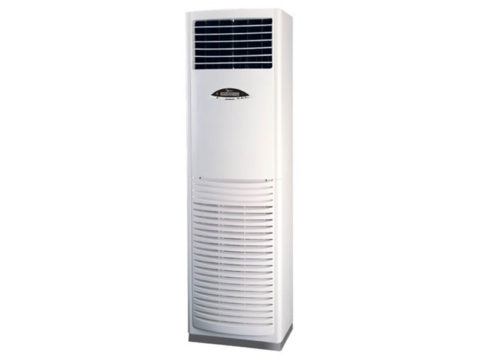
Heating, ventilation and air conditioning (HVAC) is commonly used to provide fresh air, indoor climate and comfort control services for interior building spaces.
There are three main categories of HVAC systems in general use:
HVAC systems vary widely in terms of their individual components and how they are set up within a building. Most systems do however contain some common basic components.
Boilers (1) produce hot water (or sometimes steam) to distribute to heat exchangers in the working space. This is done either by heating coils (2) which heat air as part of the ventilation system, or through hot water pipes to radiators (3). Cooling equipment (4) chills water for pumping to cooling coils (5) (or cooling coils can be supplied with refrigerant, i.e. direct expansion, DX cooling, not shown). Treated air is then blown over the chilled water coils into the area (6) to be cooled through the ventilation system. As part of the refrigeration cycle in the chiller, heat must also be expelled (7) from the system via a cooling tower or condenser. Pumps are used to circulate the chilled and hot water to the required areas throughout the building. Stale air is extracted, usually using a fan, via separate ducts (8) and expelled outside. Controls (9) are used to make components work together efficiently.
There are three main categories of HVAC systems in general use:
- Centralised ducted air systems which include dual-duct systems and constant or variable air volume systems.
- Centralised fluid-based systems which include fan-coil systems, hydronic systems and variable refrigerant flow systems.
- Decentralised systems which include distributed heat pumps and evaporative coolers.
HVAC systems vary widely in terms of their individual components and how they are set up within a building. Most systems do however contain some common basic components.
Boilers (1) produce hot water (or sometimes steam) to distribute to heat exchangers in the working space. This is done either by heating coils (2) which heat air as part of the ventilation system, or through hot water pipes to radiators (3). Cooling equipment (4) chills water for pumping to cooling coils (5) (or cooling coils can be supplied with refrigerant, i.e. direct expansion, DX cooling, not shown). Treated air is then blown over the chilled water coils into the area (6) to be cooled through the ventilation system. As part of the refrigeration cycle in the chiller, heat must also be expelled (7) from the system via a cooling tower or condenser. Pumps are used to circulate the chilled and hot water to the required areas throughout the building. Stale air is extracted, usually using a fan, via separate ducts (8) and expelled outside. Controls (9) are used to make components work together efficiently.





